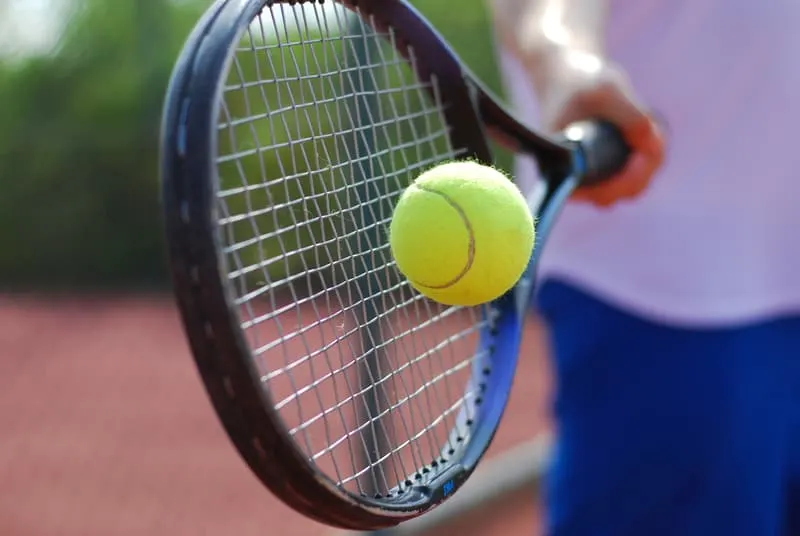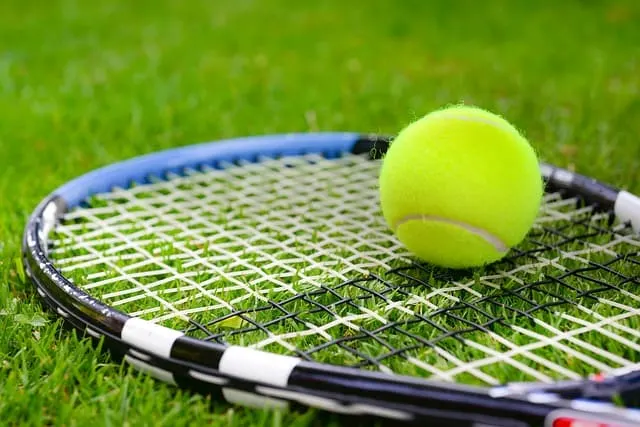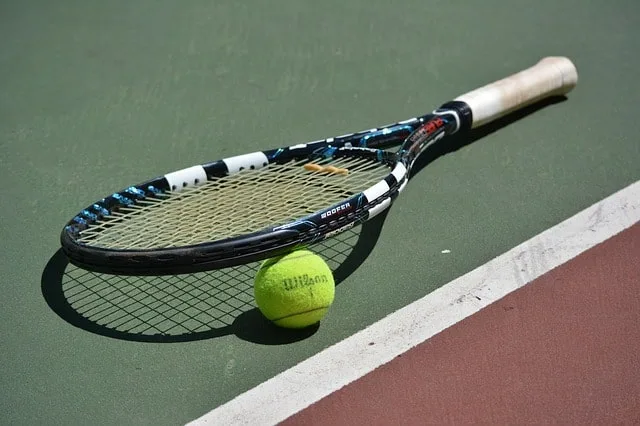
The tennis racquet obviously make a big difference, but it’s also important to consider the strings you’re using.
In this blog post, I’ll look at the difference between monofilament and multifilament tennis strings, the pros and cons of each type so you can see which is right for your game.
Monofilament vs Multifilament Strings
These are the two main types of string that you can choose for your tennis racquet.
Multifilament strings consist of hundreds of small microfibers which are strung together to form one whole tennis string. Monofilament strings, on the other hand, contain one solid piece of material.
Let’s look at how choosing either of these string types can impact on your game, for better…
..or possibly for worse!
Pros and Cons of Monofilament Strings

Monofilament strings by their nature are quite stiff, and this has can have a big affect on your playing style.
Pros
- You’ll have good control playing with these strings
- These strings tend to be very durable and should last you a long time
Cons
- Less power on your shots
- More tiring to play with (if you like to hit big shots)
Pros and cons of Multifilament Strings

These strings are a lot more flexible than monofilament strings, which can give you a number of advantages when you play tennis.
Pros
- Lots of power
- Great feel on your shots
- More comfort when you hit your shots (easier on your body)
Cons
- Less durable. It’s easier to break a string.
- Less control than monofilament strings
When Should You Use Monofilament or Multifilament Strings?
Your first consideration should be your body.
You know your strengths and limitations as a tennis player. If you’re quite a powerful player, who’s prone to breaking tennis strings, then a monofilament might be right for you.
However, if you any shoulder, wrist or elbow problems, then you should consider a multifilament string, as this will help you generate more power so you won’t need to swing as fast, and reduce the chance of injury.
Furthermore, if you don’t have any health issues, but you want some durability from a tennis string, then a monofilament string might be right for you.
It’s also a bit cheaper as you won’t have to restring your tennis racquet so often!
Other Considerations
Once you know whether a monofilament or multifilament string is right for your game, there are other factors to consider.
What is the best material for your tennis string?
For monofilament types, you can have:
- polyester (which is one of the most popular options, very durable, good for control and spin)
- natural gut (which is more expensive, great playability, holds tension really well),
- synthetic gut (a good all round option)
For multifilament types you don’t have much choice, but some players go for a hybrid option mixing a multifilament with a monofilament string.
Tennis gauge
You also need to decide on what tennis gauge to use (string thickness) as this will also determine how much power you can generate, the durability of the string and the amount of control you’ll have when you play.
Tension
In addition to the material and string thickness, you also need to think about tension. Most string manufacturers recommend a certain range, usually around 50-60 lbs. Contrary to what you might think, a lower tension will actually give you more power and a higher tension will give you more control.
Conclusion
Of course in an ideal world, you want to try out all these different strings, but hopefully this blog post has narrowed down your options, so you can have an educated guess what is the right choice for you.
For me, I have a Luxilon string which has made a considerable difference to my game. I now have a lot more spin, control and power in my shots.
